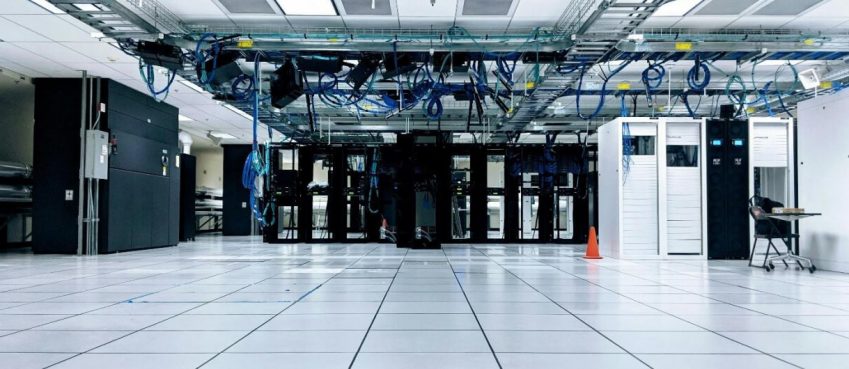
Historically, multinational enterprises need worldwide multi-protocol label switching (MPLS) services to establish their wide area network (WAN). MPLS stood as the most reasonable option. That is no longer the case today, given that protected, international SD-WAN as a Service is readily available globally.
However, as the business world has developed, network firewalls have disappeared. Mobile users have replaced static/fixed locations, enterprise applications have taken a back seat to cloud services, and cloud instances now serve the function of servers. Security risks have increased, as have security systems.
SD-WAN-as-a-service delivers a reliable, flexible, and cost-effective alternative to MPLS by utilizing the power of distributed software, abundant IP bandwidth, and off-the-shelf gear.
Why Move from MPLS to SD-WAN?
To answer that, we have to talk about what the technologies offer and which shortcomings may cause one to consider an MPLS – SD-WAN move.
MPLS is an abbreviation for multi-protocol labeling services. It is a technology for finding the shortest path between two sites in a massive network. So it’s no surprise that MPLS has become the industry standard for multi-site organizations.
When pitting SD-WAN vs MPLS, it becomes clear that the latter has several gaps that the former seems to be primed to fill.
They include:
Cloud Access
Modern networks increasingly demand high levels of adaptability to direct traffic to a range of cloud-based and SaaS services that are not accessible via conventional solutions. Rapid deployment options that may provide this agility while also optimizing traffic steering are frequently requested, which MPLS has trouble guaranteeing.
Also read: New Bethesda’s Fallout 5: Is It Coming Or Not? AnsweredExpenses
To ensure reliable high-speed internet connectivity between numerous sites, ISPs must create highly tailored, dedicated network topologies. As you can expect, this comes at a high cost.
Enterprises spend around 10% of their IT budget on networks, which need significant investments in firewalls, routers, and switches, as well as substantial recurring expenditures for leasing pricey MPLS bandwidth and connections.
Complexity
A huge MPLS-based network adds to the complexity. Organizations with scattered locations may find scaling up difficult due to deployment times, limited coverage, and the rigidity of MPLS-based networks.
Reliability
If your MPLS supplier fails, you may have no recourse. If your supplier has a problem, all technology ultimately runs into issues, and all your sites are offline. After such an interruption, businesses will purchase extra services from a second MPLS carrier. As we mentioned, MPLS is expensive, resulting in having to pay again to a different provider to avoid downtime.
This is where SD-WAN steps in.
Also read: How To Void A Check? A Step-By-Step Guide (In The Right Way)The Edge SD-WAN has Over MPLS
SD-WAN is an abbreviation for software-defined wide-area networks. SD-WAN provides networking with unprecedented flexibility and cost benefits. Standard corporate-managed MPLS services do not allow enterprises to deploy faster, more reliable applications at a lower cost and within a short time frame compared to SD-WAN services.
It becomes significantly more nimble, establishing sites in minutes, using any available data connection such as MPLS, DIA (dedicated internet), broadband, or wireless, and quickly reconfiguring sites.
SD-WAN uses a policy-based virtual overlay to separate apps from base network functions. This overlay looks at the underlying networks’ real-time performance indicators and picks the best connections for each app depending on configuration parameters.
Here are some of the benefits of using SD-WAN compared to MPLS.
- Reduces WAN OpEx and CapEx expenditures, as well as the net cost of ownership.
- Increases company agility and flexibility to stay up to date with IT advances.
- Supports numerous, secured, high-performance connections, reducing MPLS network backhaul charges.
- It enables load sharing between connections and modifies traffic based on network factors to increase performance.
- Allows for the automatic distribution and modification of premium network services, including firewalls, VPNs, security, application delivery control, and WAN optimization.
- Allows for zero-touch provisioning (ZTP).
- Enhances network security by encrypting WAN traffic and subdividing the network to limit harm in case of a breach.
SD-WAN is not without its limitations. Users should be aware that:
- SD-WAN extension requires the installation of an SD-WAN in or near the cloud provider’s data center, which is complicated when it is not impossible. This removes mobile users from the equation.
- Even though the traffic is encrypted when branches are exposed to the internet, the risk levels skyrocket as the possibility of phishing, malware, or other cyber attacks increases. Security, therefore, remains an ongoing and necessary expense.
That brings us to our last question in this brief overview.
To Wrap Up
So, should you get SD-WAN for your business?
Before you make any decisions, there are some things to check first. A viability study looks at whether SD-WAN is appropriate for your operations, the type of data used, and the various business locations. During this phase, you must review/vet the internet providers available.
Then, you can move on to consider the data you have, the outcome you would like to see, and the apps you will have to run.
Finally, it comes down to deciding who will manage the solution or how it will be maintained after deployment. SD-WAN is an almost guaranteed money saver, given its flexibility, ease of installation, manageable prices, and more.
Top 10 News
-
01
Top 10 Deep Learning Multimodal Models & Their Uses
Tuesday August 12, 2025
-
02
10 Google AI Mode Facts That Every SEOs Should Know (And Wha...
Friday July 4, 2025
-
03
Top 10 visionOS 26 Features & Announcement (With Video)
Thursday June 12, 2025
-
04
Top 10 Veo 3 AI Video Generators in 2025 (Compared & Te...
Tuesday June 10, 2025
-
05
Top 10 AI GPUs That Can Increase Work Productivity By 30% (W...
Wednesday May 28, 2025
-
06
[10 BEST] AI Influencer Generator Apps Trending Right Now
Monday March 17, 2025
-
07
The 10 Best Companies Providing Electric Fencing For Busines...
Tuesday March 11, 2025
-
08
Top 10 Social Security Fairness Act Benefits In 2025
Wednesday March 5, 2025
-
09
Top 10 AI Infrastructure Companies In The World
Tuesday February 11, 2025
-
10
What Are Top 10 Blood Thinners To Minimize Heart Disease?
Wednesday January 22, 2025







